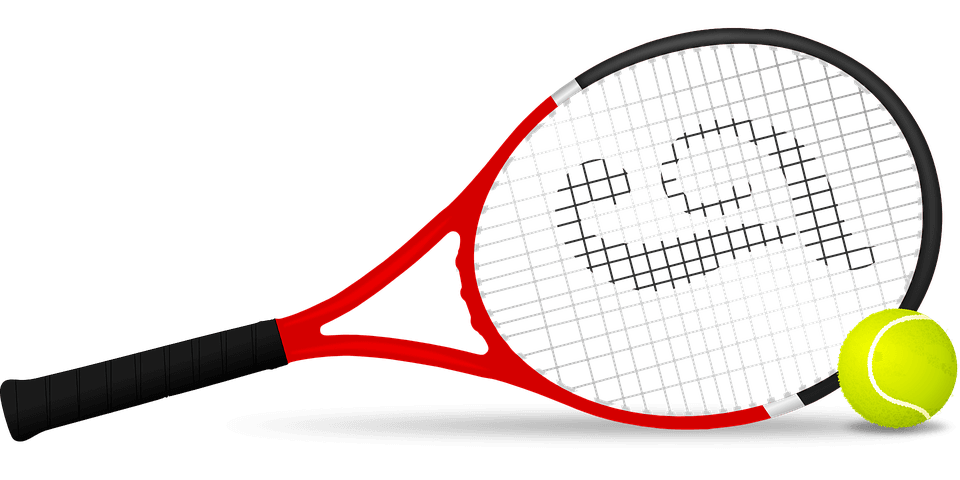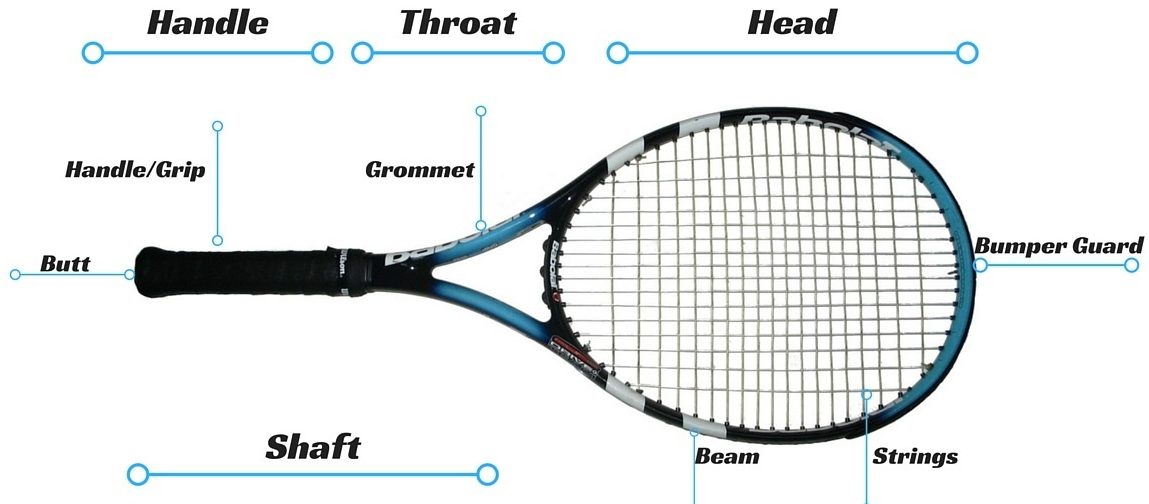
If you have just started playing tennis, it can be extremely useful to have a deep understanding of the different parts of a tennis racket.
In this way, when friends, coaches or teammates refer to the parts of a tennis racket specifically, you will have a clear understanding and can speak with knowledge about each part. If you are at that moment in which you must decide which tennis racket to buy, it can also be extremely useful to understand each part and how it affects the performance of your racket, in order to better evaluate and select a racket.
Once you’ve had the opportunity to learn more about the parts of a tennis racket, be sure to check out our detailed guide to the best tennis rackets for beginners in 2020.
The different parts of a tennis racket
Over the years, technology in the world of tennis and rackets, in particular, has evolved by leaps and bounds; however, the central parts of a tennis racket have remained constant for the most part throughout the history of tennis.
Let’s analyze the individual parts of a tennis racket with a brief explanation of each part. As we review each part, here is a drawing of a tennis racket that you can use as a reference point.

Head
The head of a tennis racket is where the ropes are placed and creates the main striking surface. Head sizes may vary between one racket and another. However, in general terms, most sizes are between 95-110 inches. Often, the size of a racket’s head has a direct influence on its overall power. That is, the larger the head, the more power and the smaller, the less power, however, the more control the player will gain.
Frame/Bumper
The frame of a tennis racket is simply the thickness of the racket’s head, which tends to differ between the three different types of tennis rackets. Perhaps one of the most neglected parts of a racket is the frame since it can have significant implications on the overall performance of the racket. Many times, the power rackets will have a larger frame, which allows the ropes to move more freely and, therefore, help to generate extra strength and power. On the other hand, with the control rackets, the frame is usually smaller, which allows for less movement (which translates into less power) and more control. You can easily compare the frame of several rackets by placing them on the floor next to each other. It is another component you can consider when buying a new racket.
Strings
While not really one of the parts of a tennis racket, the ropes are the central component of a racket, which when skewered provides the player with a striking surface to impact the ball. The strings strung tennis or have a variety of sizes and thicknesses and materials and can have a tremendous impact on the performance of the racket. The ropes and tension with which you find a racket can have a direct impact: power, control, rotation and vibration while playing.
Bumper Guard
On the top of the head covering the frame, shock protection protects the impact area of the tennis racket, which is often scratched against the ground during a game. Usually, the protectors are made of durable plastic and eventually, you will need to replace it to avoid scraping the racket frame, which in turn can lead to a frame with cracks, or even broken if you do not remedy it.
Grommet
The washers of a tennis racket are plastic inserts that extend through the holes around the entire head of a tennis racket. These rings help protect surface strings and typically hard edges inside the string holes. In addition, the thickness of the rings often comes in a specific width to allow or restrict the movement of the ropes. With power rackets, you will often find that the washers are wider allowing greater movement of the ropes, while the control rackets will have narrower washers to help avoid too much movement.
Shaft
The axis of a tennis racket extends from the bottom of the racket head to the end of the handle. At the top of the shaft, you will find the throat or triangle of the racket and then under it the handle.
Throat
The throat of a tennis racket begins at the top of the handle and is divided into two sections, which extend outward on both sides of the racket to begin the formation of the racket head. The center of the throat is hollow to maintain the weight of the racket and is where the flexibility of a racket starts. A “rigid” racket often provides less flex in the racket’s throat to help generate additional power when hitting.
Handle
The handle of a tennis racket is the bottom of the racket shaft and is the part of the racket with which it is attached when playing tennis. When manufacturers are looking to lengthen their rackets to provide an “extended” version, which provides leverage and more power, they often lengthen the handle to do so. The circumference of the handles or the length of the outer edge of a handle varies from 4 inches to 4 ⅝ inches. It is important to select the correct size handle to ensure comfort and limit the possibility of injury because it is too small or too large.
Grip
The grip of a tennis racket is simply the outer ribbon that covers the handle of the racket. In this link, you can understand the difference between grip and overgrip. It helps to hold the racket firmly by the hand, provides a cushioning surface to protect the hand from the hard surface of the handle and also helps ensure a firm connection of the end of the racket to the handle.
Handle base
The heel or base of the handle of a tennis racket is the bottom of the handle. It is slightly wider than the handle, which helps ensure that the racket remains in your hand while you play.
Butt
The top of a tennis racket’s handle simply seals the bottom of the racket’s handle and is a commonplace where racket manufacturers will place their logo, as well as the size of the racket’s handle. There you have it! Now that you have a complete understanding of the different parts of a tennis racket, you should be able to speak with confidence about your racket.






